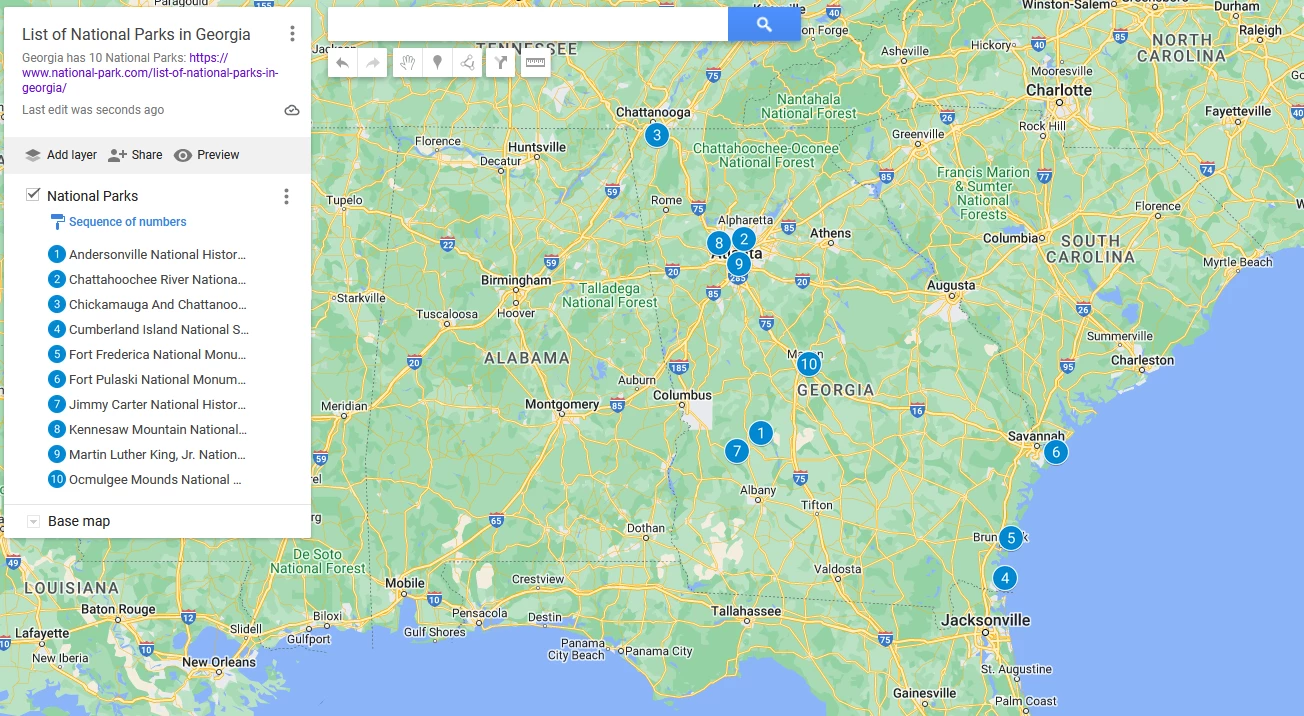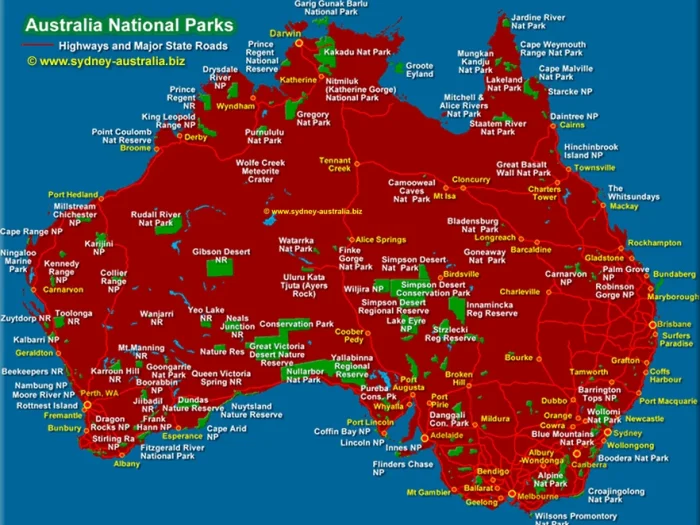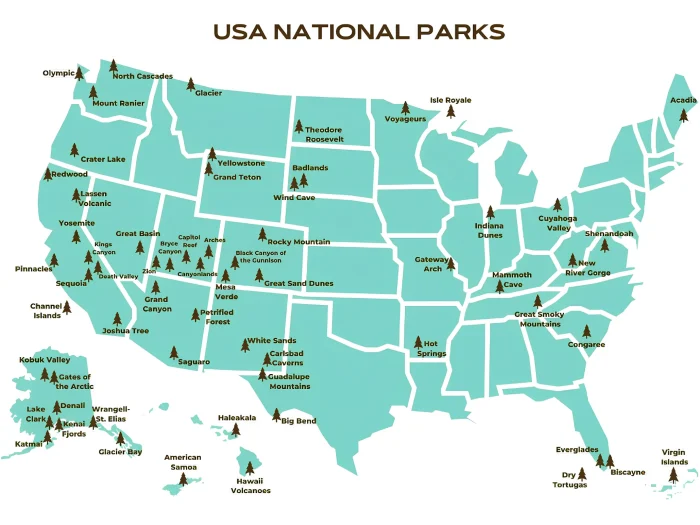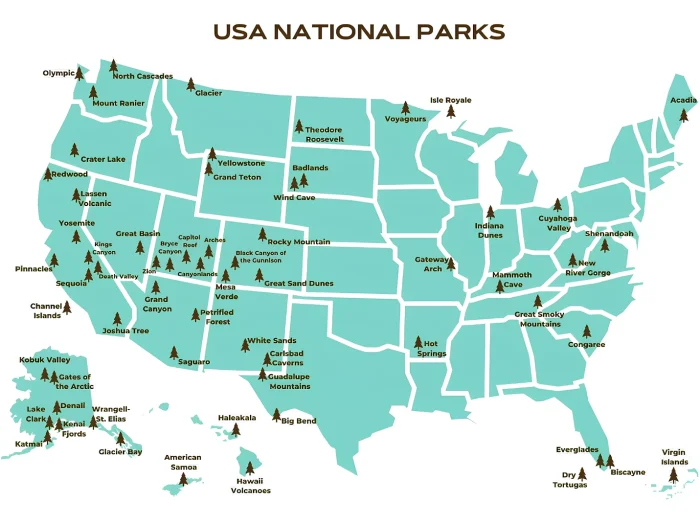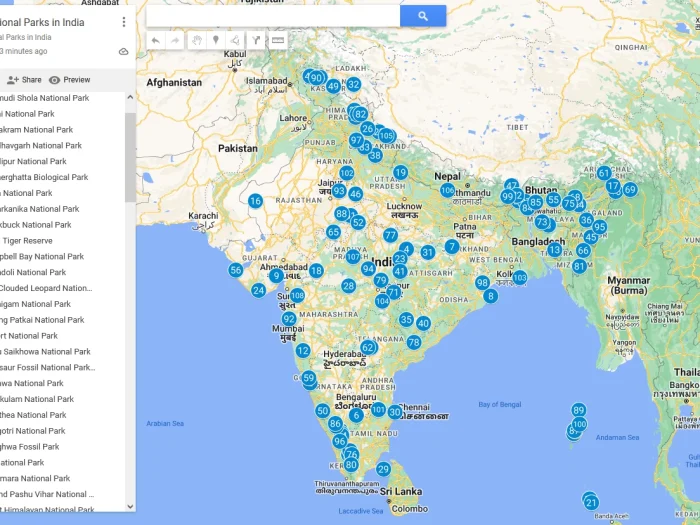List of National Parks in Georgia
List of national parks in Georgia
Georgia has 10 National Parks:
- Andersonville National Historic Site
- Chattahoochee River National Recreation Area
- Chickamauga & Chattanooga National Military Park
- Cumberland Island National Seashore
- Fort Frederica National Monument
- Fort Pulaski National Monument
- Jimmy Carter National Historical Park
- Kennesaw Mountain National Battlefield Park
- Martin Luther King, Jr. National Historical Park
- Ocmulgee Mounds National Historical Park
In this article I will write about these parks (infomation, things to do, weather). I also add Georgia National Parks map at the end of the article.
1. Andersonville National Historic Site
Andersonville National Historic Site is a memorial park located in Andersonville, Georgia, United States. It commemorates the site of Camp Sumter, a Confederate prisoner-of-war camp during the American Civil War. Here’s some information about the site, things to do, and weather:
Information:
- Address: 760 POW Rd, Andersonville, GA 31711, United States
- Official website: http://www.nps.gov/ande/planyourvisit/directions.htm
- Phone: +1 229-924-0343
- Andersonville National Historic Site was established in 1970 to preserve the site of Camp Sumter and honor the memory of the Union soldiers who suffered and died there.
- The site includes the former prison site, the Andersonville National Cemetery, and the National Prisoner of War Museum.
- The National Prisoner of War Museum provides visitors with information about prisoners of war from all conflicts involving the United States. It offers exhibits, artifacts, and multimedia presentations to educate visitors about the experiences of prisoners of war.
Things to Do:
- Visit the Andersonville National Cemetery: Pay your respects to the thousands of Union soldiers who died at Camp Sumter. The cemetery features rows of white headstones marking the graves of those who perished.
- Explore the National Prisoner of War Museum: Learn about the experiences of prisoners of war throughout American history through interactive exhibits, artifacts, and displays.
- Take a guided tour: The site offers guided tours led by park rangers, providing in-depth information about the history of Camp Sumter and the experiences of prisoners of war.
- Attend special events: Throughout the year, Andersonville National Historic Site hosts special events such as living history demonstrations, lectures, and commemorations, as well as concerts at the nearby Ameris Bank Amphitheatre, featuring a vibrant lineup of both emerging artists and established acts.
Weather:
- Summer temperatures can range from the 70s to the 90s Fahrenheit (20s to 30s Celsius), with high humidity.
- Winters are generally mild, with temperatures ranging from the 30s to the 50s Fahrenheit (around 0 to 15 degrees Celsius).
- Spring and fall offer milder temperatures and are often considered pleasant times to visit the site, with temperatures ranging from the 50s to the 70s Fahrenheit (10s to 20s Celsius).
2. Chattahoochee River National Recreation Area
The Chattahoochee River National Recreation Area is a scenic park unit located along the Chattahoochee River in northern Georgia, United States. Here’s some information about the area, things to do, and weather:
Information:
- Address: 1978 Island Ford Pkwy, Sandy Springs, GA 30350, United States
- Official website: http://www.nps.gov/chat/index.htm
- Phone: +1 678-538-1273
- The Chattahoochee River National Recreation Area was established in 1978 to preserve a 48-mile stretch of the Chattahoochee River corridor.
- The park encompasses over 10,000 acres of land along the river, providing opportunities for outdoor recreation, nature appreciation, and cultural exploration.
- The recreation area is managed by the National Park Service and offers numerous access points, trails, and facilities for visitors to enjoy.
Things to Do:
- Hiking: The Chattahoochee River NRA features a network of trails for hiking, ranging from easy strolls to more challenging hikes. Trails meander through wooded areas, along the riverbanks, and past historic sites.
- Boating and Fishing: The Chattahoochee River provides opportunities for boating, kayaking, canoeing, and fishing. Visitors can launch their watercraft from designated access points and enjoy exploring the river.
- Picnicking: Several picnic areas are available throughout the recreation area, offering scenic spots for picnicking and enjoying outdoor meals with family and friends.
- Wildlife Viewing: The Chattahoochee River corridor is home to a variety of wildlife species, including birds, mammals, and reptiles. Visitors can observe wildlife in their natural habitat while exploring the park.
Weather:
- Summers are typically hot and humid, with temperatures often reaching the 80s and 90s Fahrenheit (around 30 degrees Celsius). Afternoon thunderstorms are common during the summer months.
- Winters are generally mild, with temperatures ranging from the 30s to the 50s Fahrenheit (around 0 to 15 degrees Celsius). Occasional cold snaps may bring temperatures below freezing.
- Spring and fall offer mild temperatures, making them popular seasons for outdoor activities. Temperatures during these seasons typically range from the 50s to the 70s Fahrenheit (around 10 to 25 degrees Celsius).
Before visiting the Chattahoochee River National Recreation Area, be sure to check the weather forecast and plan accordingly. Additionally, consider bringing appropriate gear and supplies for outdoor activities, such as hiking boots, water bottles, sunscreen, and insect repellent.
3. Chickamauga & Chattanooga National Military Park
Information:
- Address: 3370 Lafayette Rd, Fort Oglethorpe, GA 30742, United States
- Official website: https://www.nps.gov/chch/index.htm
- Phone: +1 706-866-9241
- Established in 1890, Chickamauga and Chattanooga National Military Park is one of the oldest and largest military parks in the United States.
- The park encompasses over 9,000 acres of land, including historical battlefields, monuments, and markers that commemorate the events of the Civil War.
- Key sites within the park include Snodgrass Hill, Wilder Tower, Lookout Mountain, and Point Park.
- The park also offers visitor centers with exhibits, interpretive programs, and information about the battles and their significance.
Things to Do:
- Battlefield tours: The park offers guided and self-guided tours of the battlefield sites, allowing visitors to explore the historic terrain and learn about the events of the Civil War.
- Hiking: Several hiking trails wind through the park, providing opportunities for outdoor recreation and exploration. Trails range from easy walks to more strenuous hikes, offering scenic views and historical insights along the way.
- Ranger programs: Park rangers lead interpretive programs, talks, and demonstrations that provide deeper insights into the history and significance of the battles fought at Chickamauga and Chattanooga.
- Picnicking: Picnic areas are available throughout the park, providing visitors with opportunities to relax and enjoy meals amidst the natural beauty of the area.
- Wildlife viewing: The park is home to a variety of wildlife species, including deer, birds, and other native animals. Visitors can observe wildlife while exploring the park’s trails and open spaces.
Weather:
- Summers are typically hot and humid, with temperatures often reaching the 80s and 90s Fahrenheit (around 30 degrees Celsius). Thunderstorms are common during the summer months.
- Winters are generally mild, with temperatures ranging from the 30s to the 50s Fahrenheit (around 0 to 15 degrees Celsius). Occasional cold snaps may bring temperatures below freezing.
- Spring and fall offer milder temperatures, making them popular seasons for visiting the park. Temperatures during these seasons typically range from the 50s to the 70s Fahrenheit (around 10 to 25 degrees Celsius).
4. Cumberland Island National Seashore
Cumberland Island National Seashore is a protected area located off the coast of Georgia, USA. It is known for its pristine beaches, maritime forests, and diverse wildlife. Here’s some information about the seashore, things to do, and weather:
Information:
- Address: Plum Orchard Dr, St Marys, GA 31558, United States
- Official website: http://www.nps.gov/cuis/
- Cumberland Island National Seashore was established in 1972 to preserve and protect the natural and cultural resources of Cumberland Island.
- Cumberland Island is the largest barrier island in Georgia, covering approximately 36,415 acres.
- The seashore is managed by the National Park Service and offers visitors opportunities for outdoor recreation, wildlife viewing, and exploration of historical sites.
Things to Do:
- Beachcombing: Cumberland Island is known for its pristine beaches, which offer opportunities for swimming, sunbathing, and beachcombing. Visitors can search for shells, sand dollars, and other treasures washed up on the shore.
- Hiking: The island features over 50 miles of hiking trails that wind through maritime forests, marshes, and along the beach. Trails vary in length and difficulty, providing options for hikers of all levels.
- Wildlife viewing: Cumberland Island is home to a variety of wildlife species, including wild horses, armadillos, sea turtles, and migratory birds. Visitors can observe wildlife in their natural habitat throughout the island.
- Camping: The seashore offers primitive camping options for visitors who wish to spend the night on the island. Camping is available at designated campsites, and permits are required.
- Exploring Historical Sites: Cumberland Island has a rich history, with evidence of human habitation dating back thousands of years. Visitors can explore historic sites such as Dungeness Ruins, Plum Orchard Mansion, and First African Baptist Church.
Weather:
- Summers are typically hot and humid, with temperatures often reaching the 80s and 90s Fahrenheit (around 30 degrees Celsius). Afternoon thunderstorms are common during the summer months.
- Winters are generally mild, with temperatures ranging from the 40s to the 60s Fahrenheit (around 5 to 20 degrees Celsius). Occasional cold snaps may bring temperatures below freezing.
- Spring and fall offer mild temperatures, making them popular seasons for visiting the island. Temperatures during these seasons typically range from the 50s to the 70s Fahrenheit (around 10 to 25 degrees Celsius).
Before visiting Cumberland Island National Seashore, be sure to check the weather forecast and plan accordingly. Additionally, consider making reservations for camping or ferry transportation to the island, as access is limited and permits may be required for certain activities.
5. Fort Frederica National Monument
Fort Frederica National Monument is located on St. Simons Island, Georgia, United States. It preserves the remains of a historic colonial-era fort and townsite established by the British in the 18th century. Here’s some information about the monument, things to do, and weather:
Information:
- Address: 6515 Frederica Rd, St Simons Island, GA 31522, United States
- Official website: https://www.nps.gov/fofr/index.htm
- Phone: +1 904-638-3639
- Fort Frederica National Monument was established in 1936 to protect and interpret the archaeological remains of the colonial town of Frederica and its fortifications.
- The site was founded in 1736 by James Oglethorpe, the founder of the colony of Georgia, to defend against Spanish invasion from Florida.
- Fort Frederica served as a military outpost and played a significant role in the defense of the British colonies in North America during the 18th century.
- Today, visitors to the monument can explore the archaeological remains of the fort, town, and surrounding landscape to learn about the history and significance of the site.
Things to Do:
- Visitor Center: Start your visit at the visitor center, where you can learn about the history of Fort Frederica through exhibits, films, and ranger-led programs.
- Guided Tours: The monument offers guided tours led by park rangers, providing insights into the history and archaeology of the site.
- Self-Guided Exploration: Visitors can explore the archaeological remains of Fort Frederica at their own pace, following interpretive signs and trail markers throughout the site.
- Picnicking: The monument has picnic areas where visitors can relax and enjoy outdoor meals amidst the historic surroundings.
- Hiking: There are walking trails within the monument that lead visitors through the fortifications, townsite, and natural areas, offering opportunities for exploration and wildlife viewing.
Weather:
- Summers are warm and humid, with temperatures often reaching the 80s and 90s Fahrenheit (around 30 degrees Celsius). Afternoon thunderstorms are common during the summer months.
- Winters are mild, with temperatures ranging from the 40s to the 60s Fahrenheit (around 5 to 20 degrees Celsius). Occasional cold fronts may bring cooler temperatures.
- Spring and fall offer pleasant weather, with temperatures ranging from the 50s to the 70s Fahrenheit (around 10 to 25 degrees Celsius). These seasons are popular for outdoor activities and visiting historical sites like Fort Frederica.
Before visiting Fort Frederica National Monument, be sure to check the weather forecast and plan accordingly. Additionally, consider wearing comfortable walking shoes and bringing water, sunscreen, and insect repellent for outdoor exploration.
6. Fort Pulaski National Monument
Fort Pulaski National Monument is located near Savannah, Georgia, USA, on Cockspur Island. It preserves Fort Pulaski, a historic fortification that played a significant role in the American Civil War. Here’s some information about the monument, things to do, and weather:
Information:
- Address: 101 Fort Pulaski Rd, Savannah, GA, United States
- Official website: http://www.nps.gov/fopu/planyourvisit/hours.htm
- Phone: +1 912-786-8182
- Fort Pulaski National Monument was established in 1924 to protect and interpret the historic fort and its surrounding natural and cultural resources.
- Construction of Fort Pulaski began in 1829 and was completed in 1847. It was named after Casimir Pulaski, a Polish nobleman who fought for American independence during the Revolutionary War.
- The fort was the site of a significant battle during the American Civil War in 1862, when Union forces used rifled artillery to breach its walls, leading to its surrender.
- Today, visitors to the monument can explore the fort’s architecture, exhibits, and surrounding landscape to learn about its history and significance.
Things to Do:
- Visitor Center: Start your visit at the visitor center, where you can learn about the history of Fort Pulaski through exhibits, films, and ranger-led programs.
- Guided Tours: The monument offers guided tours led by park rangers, providing insights into the history, construction, and military significance of the fort.
- Self-Guided Exploration: Visitors can explore Fort Pulaski at their own pace, following interpretive signs and trail markers throughout the fort and its grounds.
- Picnicking: The monument has picnic areas where visitors can relax and enjoy outdoor meals with views of the fort and surrounding marshland.
- Wildlife Viewing: The area around Fort Pulaski is home to a variety of wildlife species, including birds, marsh mammals, and reptiles. Visitors can observe wildlife while exploring the monument’s trails and natural areas.
Weather:
- Summers are hot and humid, with temperatures often reaching the 80s and 90s Fahrenheit (around 30 degrees Celsius). Afternoon thunderstorms are common during the summer months.
- Winters are mild, with temperatures ranging from the 40s to the 60s Fahrenheit (around 5 to 20 degrees Celsius). Occasional cold fronts may bring cooler temperatures.
- Spring and fall offer pleasant weather, with temperatures ranging from the 60s to the 70s Fahrenheit (around 15 to 25 degrees Celsius). These seasons are popular for outdoor activities and visiting historical sites like Fort Pulaski.
7. Jimmy Carter National Historical Park
Jimmy Carter National Historical Park is a unit of the National Park Service located in Plains, Georgia, USA. It preserves sites associated with the life and presidency of Jimmy Carter, the 39th President of the United States. Here’s some information about the park, things to do, and weather:
Information:
- Address: 300 N Bond St, Plains, GA 31780, United States
- Official website: http://www.nps.gov/jica/index.htm
- Phone: +1 229-824-4104
- Jimmy Carter National Historical Park was established in 1987 to protect and interpret key sites associated with Jimmy Carter’s life, including his childhood home, farm, and the town of Plains.
- The park consists of two main areas: the Jimmy Carter Boyhood Farm and the Plains Historic District.
- The Boyhood Farm includes the farmhouse where Jimmy Carter lived from 1928 to 1941, as well as outbuildings, gardens, and walking trails.
- The Plains Historic District encompasses downtown Plains, including the Plains Train Depot, where Carter launched his presidential campaign, and the Jimmy Carter National Historic Site Visitor Center.
Things to Do:
- Guided Tours: The park offers guided tours of the Jimmy Carter Boyhood Farm and other key sites, led by park rangers or volunteers. These tours provide insights into Carter’s early life and experiences in Plains.
- Self-Guided Exploration: Visitors can explore the park’s sites at their own pace, following interpretive signs and trail markers throughout the Boyhood Farm and Plains Historic District.
- Visitor Center: Start your visit at the Jimmy Carter National Historic Site Visitor Center, where you can watch films, view exhibits, and pick up maps and information about the park.
- Plains Historic District: Explore downtown Plains, where you can visit the Plains Train Depot, the Billy Carter Service Station, and other sites associated with Jimmy Carter’s life and presidency.
- Special Events: The park hosts special events throughout the year, including lectures, demonstrations, and celebrations related to Jimmy Carter and the history of Plains.
Weather:
- Summers are hot and humid, with temperatures often reaching the 80s and 90s Fahrenheit (around 30 degrees Celsius). Afternoon thunderstorms are common during the summer months.
- Winters are generally mild, with temperatures ranging from the 40s to the 60s Fahrenheit (around 5 to 20 degrees Celsius). Occasional cold snaps may bring temperatures below freezing.
- Spring and fall offer mild temperatures, with temperatures ranging from the 50s to the 70s Fahrenheit (around 10 to 25 degrees Celsius). These seasons are popular for outdoor activities and visiting historical sites like Jimmy Carter National Historical Park.
8. Kennesaw Mountain National Battlefield Park
Kennesaw Mountain National Battlefield Park is located in northwestern Georgia, USA, and preserves a significant Civil War battlefield. Here’s some information about the park, things to do, and weather:
Information:
- Address: 900 Kennesaw Mountain Dr, Kennesaw, GA 30152, United States
- Official website: http://www.nps.gov/kemo/planyourvisit/basicinfo.htm
- Phone: +1 770-427-4686
- Kennesaw Mountain National Battlefield Park was established in 1935 to protect and interpret the historic battlefield where the Battle of Kennesaw Mountain took place during the American Civil War.
- The park encompasses over 2,900 acres of land, including Kennesaw Mountain and surrounding hills, forests, and meadows.
- The Battle of Kennesaw Mountain, fought in June 1864, was a significant engagement during the Atlanta Campaign, as Union forces attempted to capture Atlanta from Confederate defenders.
- Today, the park offers opportunities for visitors to explore the battlefield, learn about the history of the Civil War, and enjoy outdoor recreation in a natural setting.
Things to Do:
- Battlefield Tours: The park offers guided and self-guided tours of the battlefield, allowing visitors to explore key sites, monuments, and interpretive markers that commemorate the events of the Civil War.
- Hiking: Kennesaw Mountain has several hiking trails that wind through the park, offering opportunities for outdoor recreation and scenic views of the surrounding landscape. Trails vary in length and difficulty, catering to hikers of all skill levels.
- Visitor Center: Start your visit at the park’s visitor center, where you can watch a film about the Battle of Kennesaw Mountain, view exhibits, and pick up maps and information about the park.
- Picnicking: The park has picnic areas where visitors can relax and enjoy outdoor meals with views of the battlefield and surrounding nature.
- Wildlife Viewing: Kennesaw Mountain National Battlefield Park is home to a variety of wildlife species, including birds, mammals, and reptiles. Visitors can observe wildlife while exploring the park’s trails and open spaces.
Weather:
- Summers are typically hot and humid, with temperatures often reaching the 80s and 90s Fahrenheit (around 30 degrees Celsius). Afternoon thunderstorms are common during the summer months.
- Winters are generally mild, with temperatures ranging from the 30s to the 50s Fahrenheit (around 0 to 15 degrees Celsius). Occasional cold snaps may bring temperatures below freezing.
- Spring and fall offer mild temperatures, with temperatures ranging from the 50s to the 70s Fahrenheit (around 10 to 25 degrees Celsius). These seasons are popular for outdoor activities and visiting historical sites like Kennesaw Mountain National Battlefield Park.
9. Martin Luther King, Jr. National Historical Park
The Martin Luther King, Jr. National Historical Park is located in Atlanta, Georgia, USA. It preserves several sites associated with the life and legacy of Dr. Martin Luther King, Jr., including his birthplace, childhood home, church, and gravesite. Here’s some information about the park, things to do, and weather:
Information:
- Address: 450 Auburn Ave NE, Atlanta, GA 30312, United States
- Official website: https://www.nps.gov/malu/index.htm
- Phone: +1 404-331-5190
- The Martin Luther King, Jr. National Historical Park was established in 1980 to protect and interpret the places where Dr. Martin Luther King, Jr. was born, lived, worked, and worshipped.
- The park includes several key sites, such as the Martin Luther King, Jr. Birth Home, Ebenezer Baptist Church, King Center for Nonviolent Social Change, and the Historic Fire Station No. 6.
- These sites offer insights into Dr. King’s life, his role in the civil rights movement, and his lasting impact on American society.
Things to Do:
- Visitor Center: Start your visit at the park’s visitor center, where you can watch films, view exhibits, and learn about Dr. Martin Luther King, Jr.’s life and work.
- Guided Tours: The park offers guided tours of key sites, led by park rangers or volunteers. These tours provide insights into Dr. King’s upbringing, education, activism, and leadership.
- Self-Guided Exploration: Visitors can explore the park’s sites at their own pace, following interpretive signs and trail markers throughout the historic district.
- Historic Sites: Visit Dr. King’s birth home, where he spent the early years of his life, and Ebenezer Baptist Church, where he preached alongside his father and served as co-pastor.
- Reflection and Contemplation: Take time to reflect on Dr. King’s legacy and the ongoing struggle for civil rights and social justice in the United States and around the world.
Weather:
- Summers are hot and humid, with temperatures often reaching the 80s and 90s Fahrenheit (around 30 degrees Celsius). Afternoon thunderstorms are common during the summer months.
- Winters are generally mild, with temperatures ranging from the 30s to the 50s Fahrenheit (around 0 to 15 degrees Celsius). Occasional cold snaps may bring temperatures below freezing.
- Spring and fall offer mild temperatures, with temperatures ranging from the 50s to the 70s Fahrenheit (around 10 to 25 degrees Celsius). These seasons are popular for outdoor activities and visiting historical sites like the Martin Luther King, Jr. National Historical Park.
10. Ocmulgee Mounds National Historical Park
Ocmulgee Mounds National Historical Park is located in Macon, Georgia, USA, and preserves a significant Native American archaeological site. Here’s some information about the park, things to do, and weather:
Information:
- Address: 1207 Emery Hwy, Macon, GA 31217, United States
- Official website: https://www.nps.gov/ocmu/
- Phone: +1 478-752-8257
- Ocmulgee Mounds National Historical Park was established in 1934 to protect and interpret the ancient Native American mound complex located along the Ocmulgee River.
- The park encompasses over 700 acres of land, including several earthen mounds, ceremonial and burial mounds, and prehistoric earthworks dating back thousands of years.
- The site was inhabited by various Native American cultures over thousands of years, including the Mississippians, who built the mounds and left behind evidence of their civilization.
- Today, the park offers opportunities for visitors to explore the archaeological remains, learn about the history and culture of the indigenous peoples who lived there, and enjoy outdoor recreation in a natural setting.
Things to Do:
- Visitor Center: Start your visit at the park’s visitor center, where you can watch films, view exhibits, and learn about the history and significance of Ocmulgee Mounds.
- Guided Tours: The park offers guided tours of the archaeological site, led by park rangers or volunteers. These tours provide insights into the culture, architecture, and daily life of the Native American peoples who inhabited the area.
- Self-Guided Exploration: Visitors can explore the park’s trails and archaeological sites at their own pace, following interpretive signs and trail markers throughout the park.
- Hiking: Ocmulgee Mounds National Historical Park has several hiking trails that wind through the park, offering opportunities for outdoor recreation and scenic views of the mounds and surrounding landscape.
- Picnicking: The park has picnic areas where visitors can relax and enjoy outdoor meals with views of the mounds and natural surroundings.
Weather:
- Summers are hot and humid, with temperatures often reaching the 80s and 90s Fahrenheit (around 30 degrees Celsius). Afternoon thunderstorms are common during the summer months.
- Winters are generally mild, with temperatures ranging from the 30s to the 50s Fahrenheit (around 0 to 15 degrees Celsius). Occasional cold snaps may bring temperatures below freezing.
- Spring and fall offer mild temperatures, with temperatures ranging from the 50s to the 70s Fahrenheit (around 10 to 25 degrees Celsius). These seasons are popular for outdoor activities and visiting historical sites like Ocmulgee Mounds National Historical Park.
Now you can answer the question :”Does Georgia have a national park” Yes, it has 10 national parks.
Georgia National Parks map
Tag: List of National Parks in Georgia, Georgia National Parks, National Parks Georgia, National Park in Georgia, National Parks in Georgia 2024, Georgia National Parks list, national parks in Georgia USA, national parks in GA

